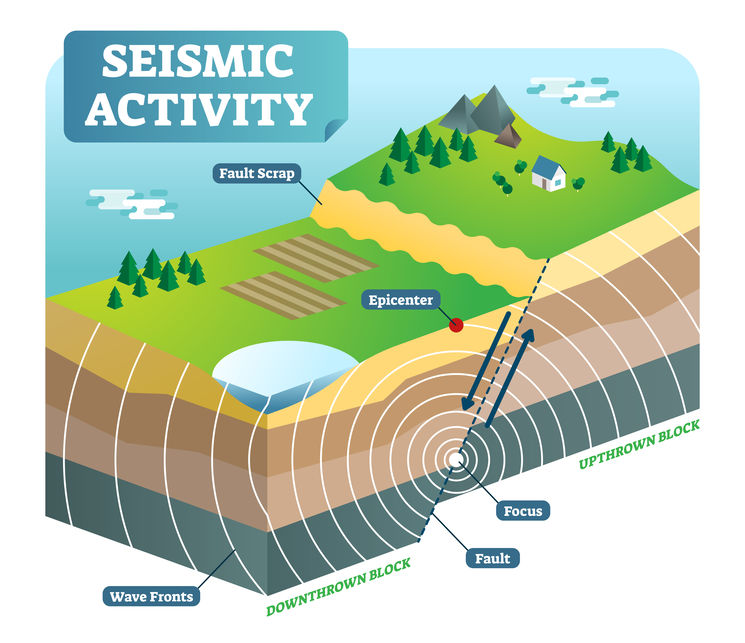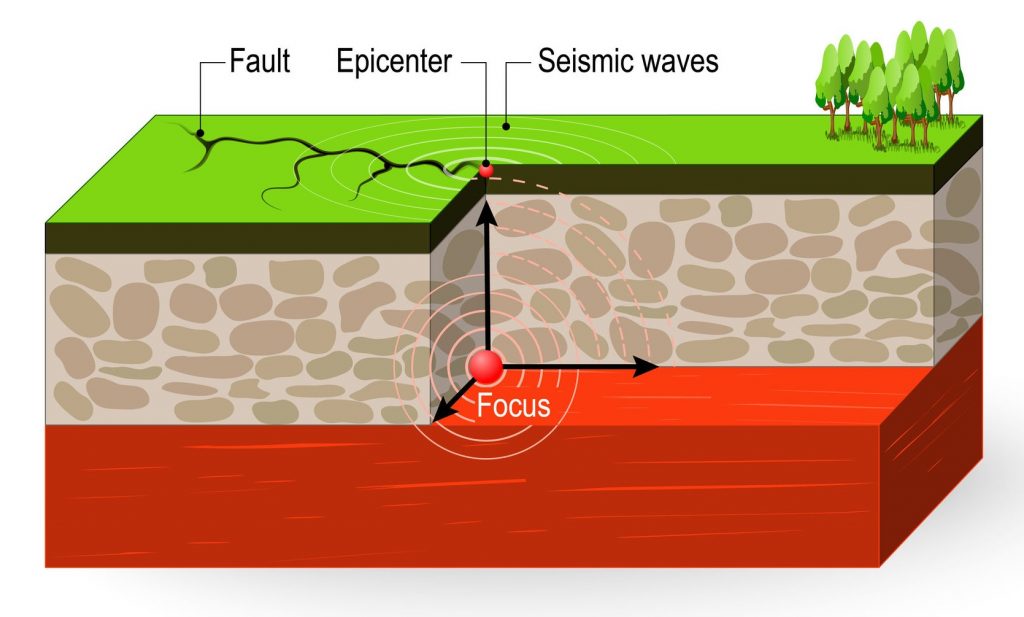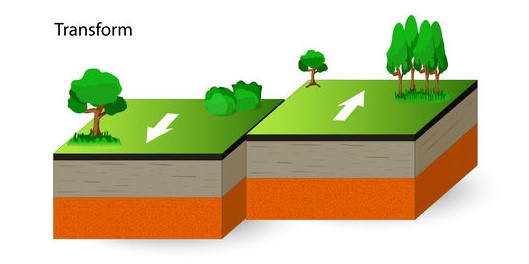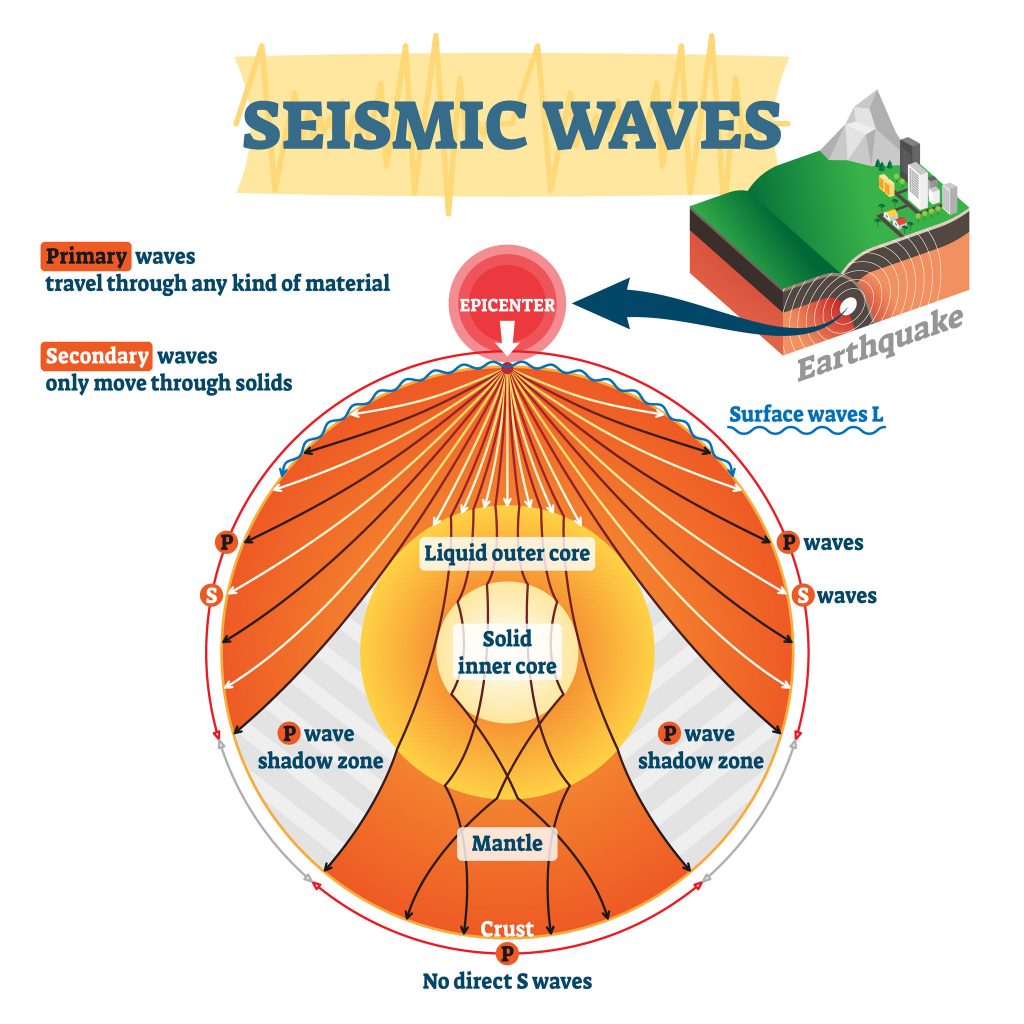An earthquake happens when two blocks of the earth suddenly slip past one another. Earthquakes are the vibrations caused by rocks breaking under stress. The underground surface along which the rock breaks and moves is called a fault plane.

The focus, or “hypocentre”, of an earthquake is the point where it originated within the Earth. The point on the Earth’s surface directly above the focus is called the earthquake epicentre.

The earth is made up of a series of plates. The plate boundaries are made up of many faults, and most of the earthquakes around the world occur on these faults. The edges of the plates are rough, they get stuck while the rest of the plate keeps moving. When the plate has moved far enough, the edges unstick and there is a release of pressure on one of the faults resulting in an earthquake.

Seismic Waves
Seismic waves are waves of energy that travel through the Earth’s layers, and are a result of earthquakes, volcanic eruptions, magma movement, large landslides and large man-made explosions that give out low-frequency acoustic energy.

When an earthquake occurs the seismic waves (P and S waves) spread out in all directions through the Earth’s interior. … Seismic waves move more slowly through a liquid than a solid. Molten areas within the Earth slow down P waves and stop S waves because their shearing motion cannot be transmitted through a liquid.
Richter Scale
The Richter magnitude scale was developed in 1935 by Charles F. Richter as a way to compare the size of earthquakes. The magnitude of an earthquake is determined from the logarithm of the amplitude of waves recorded by seismographs.

The size or magnitude of earthquakes is determined by measuring the amplitude of the seismic waves recorded on a seismograph and the distance of the seismograph from the earthquake. These are put into a formula which converts them to a magnitude, which is a measure of the energy released by the earthquake. For every unit increase in magnitude, there is roughly a thirty-fold increase in the energy released. For instance, a magnitude 6.0 earthquake releases approximately 30 times more energy than a magnitude 5.0 earthquake, while a magnitude 7.0 earthquake releases approximately 900 times (30×30) more energy than a magnitude 5.0.
Geoscience Australia
Geoscience Australia monitors, analyses and reports on earthquakes in real time. Find out if the earth is shaking near you!
Global Earthquakes

As you can see from the data from the last 120 years that earthquakes occur most commonly at the tectonic plate boundaries. Large shallow earthquakes also happen where two plates are pulling apart with the creation of new oceanic crust along mid-ocean ridges and on the transform faults that intersect them.
Shallow intraplate earthquakes occur in the relatively stable interior of continents away from plate boundaries. They are less common and do not follow easily recognisable patterns. This type of earthquake generally originates at shallow depths.
Discover the 10 biggest Earthquakes in the last 100 years

